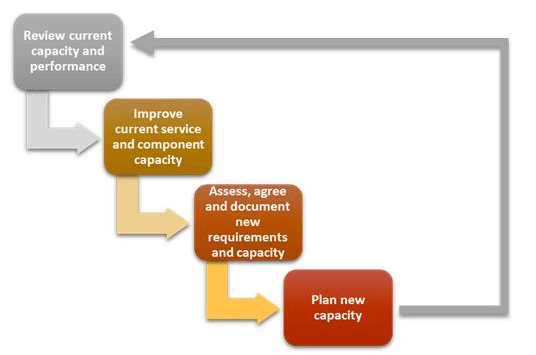 Branimir Valentic
Branimir Valentic
February 16, 2016
When I started exploring ITIL and ISO 20000, what I figured out is that the Capacity Management process is involved in many operational activities, but also in most of the other IT Service Management (ITSM) processes. My further involvement in ITSM proved that fact.
Because it is so important – or better to say, because it influences so many other processes – Capacity Management should be a well-set process, according to both ITIL and ISO 20000. And that’s where the simplicity ends. There is no cookbook to explain how to set the Capacity Management process. This process will depend on your business and related services. But, fortunately, there are many elements in the scope of Capacity Management that are common to all companies, and give you a good chance to setup the process.
Actually – yes, many of them. The reason for this is that activities in the process rely (heavily) on information and corresponding systems. To be more precise, without good preparation, the Capacity Management process can’t be performed. So, let’s see, then, what the prerequisites are.
First of all, you should be aware of your organization’s business, service, and technology components. These are the three sub processes of Capacity Management:
Since we have a whole article devoted to these sub processes, Three faces of Capacity Management, I will not go into more detail here. The point is that each of these sub processes provides inputs you need during the preparation phase. For example, if you have a service and you need to make a Capacity Plan for it – it’s a must for you to understand its functionality (what does this service do?) and the related technology behind it. That will give you input about the components that support this service, and that’s where you can be concreate with numbers (meaning measurable targets). So, here are the elements that you need to consider during the preparation phase:
So, you are done with preparation. Great – that’s a huge job that gives you the foundation where you can start building your process and related activities. As with many other processes – a policy is an excellent beginning.
Policy – This is your guideline throughout the process. In the policy you will define the general parameters of the process. A Capacity Policy could be a stand-alone document or integrated into the process description. A few examples which the policy should define are:
High-level process description – The next step in the Capacity Management process setup is to group activities, i.e., to define the high-level process, which is shown in Figure.

Figure: High-level process description
The Capacity Plan includes creation of Capacity Plans (as described earlier) for each type of capacity you support.
Detailed activities – The high-level process description will group similar activities, but in practice you will have to detail activities with associated roles and their responsibilities for each group of high-level activities. For example, while reviewing current performance you need to define the components or parts of a service that need monitoring (e.g., it’s not necessary to monitor all components, only critical ones). That will differ from service to service. Once you know what should be monitored, you have to know who is doing that, which tools are used, the parameters that you will measure, the thresholds, and what to do once the threshold has been reached.
So, your process is setup and everything appears to be under control. Well, that’s just the beginning of the “journey.” Namely, setting up Capacity Management belongs to the design activities, but once the process is set, the operational activities will rely heavily on this process and the results of its activities. That’s a burden, but also an opportunity to influence efficiency once the services are used in the live environment.
Use our free ITIL and ISO 20000 Tools to check your compliance with ITIL and ISO 20000.